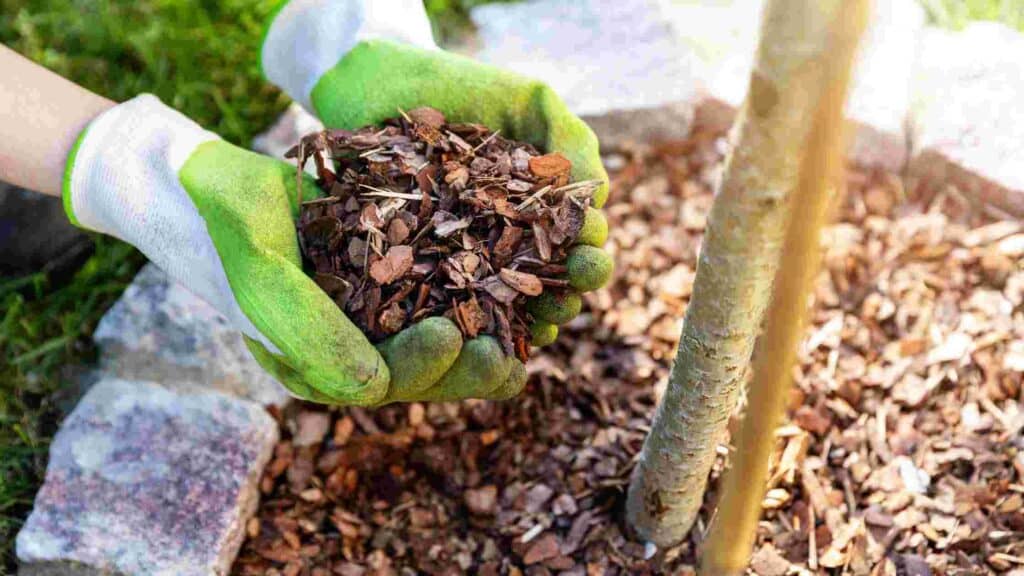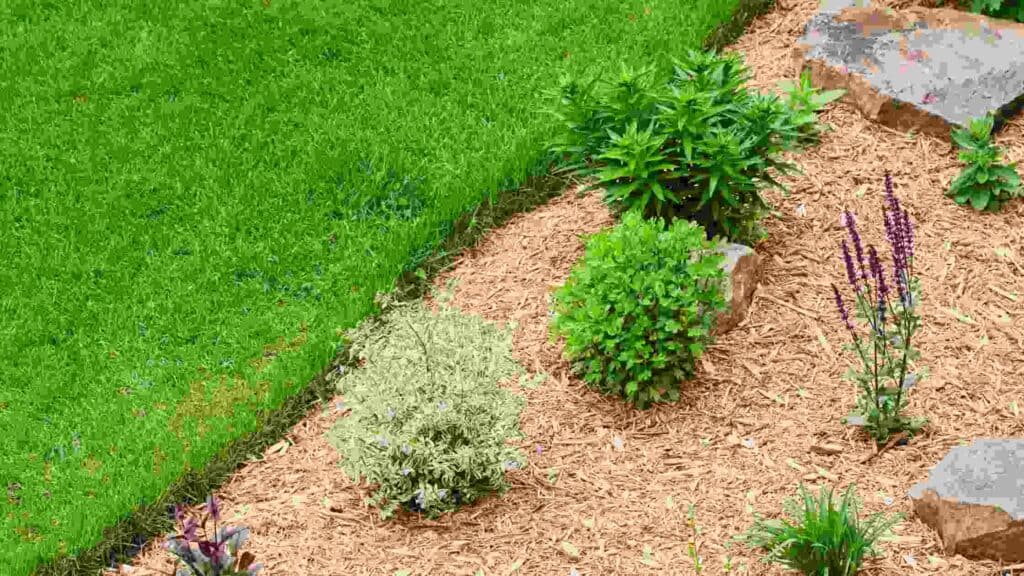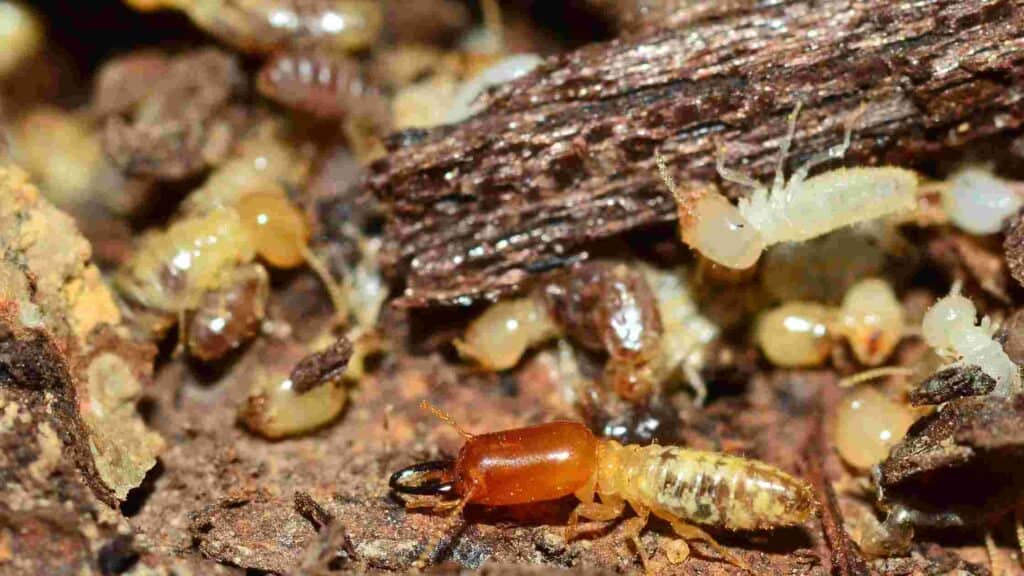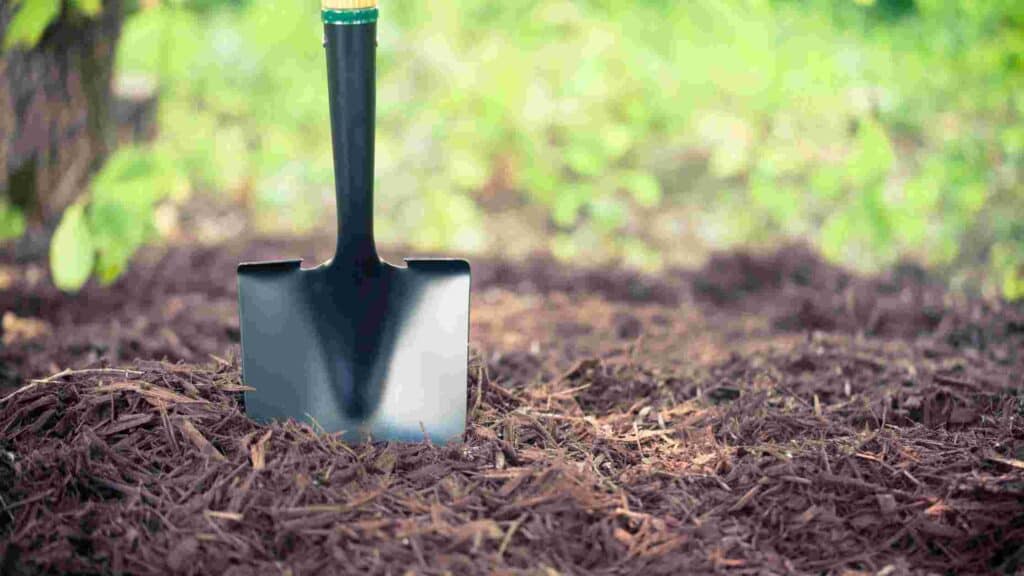If you’re into gardening or simply want to keep your outdoor space looking neat, you’ve probably used mulch. But have you ever wondered – does mulch attract bugs?
Let’s dive into this buggy matter and see what’s really going on with our beloved garden cover.
Does Mulch Attract Bugs?
Truth be told, mulch serves as a cozy hideout and shield for various insect species. Now, that’s not all bad news! Insects play a vital role in decomposing organic mulches, helping them break down and enrich the soil.
However, there’s a catch – not all bugs are friendly. Some troublemakers, like termites, sowbugs, carpenter ants, millipedes, centipedes, and earwigs, can turn your gardening dreams into a nightmare by attacking your precious plants and even buildings!
Mulch Overview
Before we delve further, let’s understand soil conservation. What is mulch?
Mulch serves several essential functions in your garden. It helps suppress weeds, improves moisture retention in the soil, regulates soil temperature, and prevents soil erosion – all great perks for your green space!
There are ways to prevent damage from insects and control their impact on your plants. One of the key strategies is to pick the right mulch that doesn’t invite bug trouble.
Additionally, adopting proper mulching methods can promote healthy plant growth while keeping those unwanted pests away.
Organic vs Inorganic Mulch: Key Differences
In the world of mulch, there are 2 main types – organic and non-organic mulches. Each comes with its set of perks and quirks, but which one is right for your garden?
Let’s dig in and uncover the features of these mulch types!
Organic Mulch: Moisture Booster And Soil Feeder

First up, we have the organic mulch, a garden favorite for its fantastic ability to increase soil moisture (check out the best soil test kit) and slow down pesky evaporation.
As it decomposes, organic mulch enriches the soil with essential nutrients, making it a friend to your plants’ roots. This can work wonders for your garden’s overall health.
However, there’s a catch. While organic mulches offer a plethora of benefits, they can also attract some insects like termites, pillbugs, sowbugs, millipedes, centipedes, and earwigs.
But that’s not all. Organic mulches can even become cozy shelters for cockroaches and rodents, giving them a convenient hideout right in your garden.
Organic mulches are derived from natural materials like leaves, vegetable matter and plants, grass clippings, bark, straw, and wood chips. Among these, wood mulches take the crown for popularity, thanks to their appealing looks, wide availability, and affordability.
Straw Mulches
Straw mulches come to the rescue when it comes to reducing insect populations and keeping those bugs away from squash and cucumber plants. They also discourage bugs from laying eggs and infesting the garden.
Additionally, straw mulch provides protection to plants against fungal infections and other diseases that could cause rot.
Suggested reading: How to get rid of backyard mushrooms?
Inorganic Mulch: The Long-Lasting Insulator

Unlike organic mulch, non-organic types don’t break down, which means they can stick around much longer. While they may not offer the soil-nourishing goodness of organic mulches, they do have their perks.
One of the advantages of non-organic mulches is that they’re less likely to bring in above-ground pests like the ones mentioned earlier.
However, beware! Below-ground pests, like termites, can still find solace in the insulation created by non-organic mulches, giving them the perfect gateway to your wooden structures.
Inorganic mulches consist of non-living materials such as lava rocks, pebbles, seashells, rubber, and plastic. A study conducted in Guelph, Ontario, revealed that rubber mulch and decorative stone worked wonders in warding off termites.
Rubber mulch, crafted from recycled rubber tires and available in various colors, acts as a potent bug-repellent (check out the rubber mulch calculator).
Some gardening enthusiasts use silver plastic or aluminum foil mulch around their vegetable plants to significantly reduce specific insects or the viruses they might carry. This trick works best when more than 60 percent of the soil’s surface isn’t obstructed by the plant leaves.
Does Mulch Attract Termites?

Now, you might be wondering if mulch plays a part in inviting termites to your property. The answer lies in their love for moisture and shelter.
Termites are quite fond of the moisture that mulch provides, using it as a cover to explore the area and search for their favorite food – wood.
While they might not necessarily feed on the mulch itself, its presence can increase their chances of survival if they’re already lurking around your home.
Now, here’s the crucial part. Placing organic mulch too close to your house could be like opening a termite expressway to your wooden haven.
When termites are already present in your vicinity, they can effortlessly make their way through the mulch and into your home.
Termites And Organic Mulch
Here’s some good news – wood chip mulches generally won’t attract termites that aren’t already in your neighborhood.
But don’t get too complacent! You can boost your odds of keeping termites at bay by occasionally raking your mulch to allow better aeration.
When termites are desperately hungry, they might feed on wood-based mulch. However, if they rely solely on this mulch, they won’t survive for too long.
The moist soil beneath mulches serves as a convenient bridge for them to travel from their garden colonies to wooden structures or your house.
Surprisingly, gravel mulches, not just wood mulches, can retain moisture exceptionally well, creating the perfect environment for a termite infestation.
What Mulch Does Not Attract Bugs?
Certain wood chips, such as those from hemlock and cedar trees, have a natural oil with a scent that drives away bugs like ticks, moths, snails, pillbugs, and slugs. On the other hand, Grade A pine doesn’t attract insects seeking nesting areas because it lacks any living organic matter.
Non-wood organic mulches, such as shredded leaves and grass clippings, also play a vital role. They not only enrich the soil with essential nutrients and minerals but also influence the insect population in the garden. For instance, straw mulch indirectly supports the growth of larval predators that feast on pests, helping to keep the insect balance in check.
Interestingly, some organic mulches, like peat moss, cocoa shells, and coffee bean chaff, which were initially designed to repel bugs, have also shown effectiveness against termites, as discovered in the same Guelph study.
How Do You Keep Bugs Out Of Mulch?

So, how do you fend off these insects? The key is long-term pest control and termite prevention. It’s wise to seek the help of a pest control professional to keep those termites at bay and your garden and home safe and sound.
Mulching can work wonders for your garden, but it’s essential to do it right to reap all the benefits. Here are some expert tips to guide you on your mulching journey:
1. Create A “Buffer Zone”
For extra protection against tunneling termites, consider establishing a “buffer zone” between your home’s foundation and the mulch.
This strip of bare dirt should be a foot or more wide, and it acts as a deterrent for termites while keeping them away from your precious abode.
Though it’s best to keep this zone bare, you can add small amounts of non-organic mulch for landscaping aesthetics.
Remember to ensure that the ground is properly graded away from your home’s foundation before mulching to prevent water from flowing toward your house.
2. Foundation Gap – Should You Not Put Mulch Around Your House?
When applying mulch near your home, be sure to leave about 6 inches of space between the ground and your home’s siding or woodwork.
This gap is crucial, as it complies with building codes and helps prevent moisture from seeping into the wood. By doing so, you’ll also discourage rodents and insects from getting too cozy near your house.
You may also be interested in finding out how deep should mulch be.
3. Don’t Water the House
As tempting as it may be to water your plants, make sure not to wet the soil strip surrounding your home’s foundation.
Keeping this area dry and unappealing to termites is crucial in warding off potential termite invasions. Resist the urge to spray your home’s walls with sprinklers – it’s not the kind of shower your house needs!
4. Measure The Mulch Depth
A general rule of thumb is never to pile mulch more than 3 inches deep. This is especially vital for organic mulch, as anything deeper may not dry out properly and lead to excessive soil moisture.
However, don’t go too shallow either, as you’ll miss out on the mulch’s intended benefits. Find that sweet spot, and your garden will thrive!
5. Remove The Old Mulch During Replacement
Before adding new mulch, make sure to remove the old one. Starting with a clean slate will give your garden the fresh start it deserves and prevent any unwanted surprises.
You may also be interested in finding out: How often should you replace mulch?
6. Stay Vigilant Against Termites
Keep a watchful eye on your home’s foundation, both inside and outside, for any signs of termite activity.
Look out for those above-ground tunneling structures – they might be a red flag! If you spot any termite-related problems, address them promptly to prevent any potential damage.
7. Keep Mulch Dry
If your yard tends to stay wet, go easy on the mulch layer – limit it to 3 inches or less. Additionally, make it a habit to rake the mulch periodically to allow it to dry out and breathe.
A well-aerated mulch layer is a happy and healthy one! (check out our top pick for the best plug aerator).
FAQs
1. What is the best bug-resistant mulch?
When it comes to bug-resistant mulch, cedar, and cypress mulch are considered among the best choices. The natural properties of these mulches, including their scent and composition, help deter bugs from making a home in your garden beds.
2. Can you spray mulch for bugs?
Yes, you can spray mulch with insecticides specifically designed to control bugs. It’s important to follow the instructions on the insecticide label and apply it carefully to avoid any potential harm to plants or other beneficial insects.
3. How long does cedar mulch repel bugs?
The effectiveness of cedar mulch in repelling bugs can vary depending on factors like environmental conditions and specific insect species.
While cedar mulch generally has bug-repellent properties that can last for several months, it’s important to monitor the situation and reapply if necessary.
4. How to get rid of bugs in mulch?
To eliminate bugs in mulch, start by removing any decaying organic matter and ensuring proper drainage to reduce favorable conditions for bugs.
Regularly turning the mulch and exposing it to sunlight can also help control bug populations. Additionally, consider using bug-resistant mulch types like cedar or cypress to discourage bug infestations.
5. Does pine bark mulch attract bugs?
Pine bark mulch may attract bugs depending on local conditions and the specific preferences of bugs in the area.
While bugs can sometimes be attracted to the organic matter in pine bark mulch, proper maintenance, and monitoring can help manage any potential bug issues effectively.
6. Does wood mulch attract bugs?
Wood mulch, including varieties like hardwood or softwood, can attract bugs, especially when it retains moisture. However, maintaining proper moisture levels, regularly turning the mulch, and practicing good garden hygiene can help minimize bug attraction and infestation.
7. Does red mulch attract bugs?
Red mulch does not inherently attract bugs more than other types of mulch. The color of the mulch typically does not play a significant role in bug attraction.
Instead, factors like moisture, organic matter, and environmental conditions are more influential in determining bug activity in mulch.
8. Does coconut mulch attract bugs?
Coconut mulch, known for its natural oils, tends to be less attractive to bugs compared to other types of mulch. The natural properties of coconut mulch, including its composition and scent, can help deter bugs and make it a relatively bug-resistant choice.
9. Does pine needle mulch attract bugs?
Pine needle mulch may attract bugs in certain circumstances, as some bugs may find the organic matter and moisture content of pine needle mulch favorable.
However, the extent of bug attraction can vary depending on factors such as local conditions and bug preferences in the area.
Conclusion: Does Mulch Attract Bugs?
With these expert tips in your arsenal, you’re ready to mulch like a pro and create a thriving garden (you may also be interested in checking out: is mulch flammable?).
Maintain that six-inch foundation gap to keep moisture and pests at bay. Embrace the “buffer zone” to deter tunneling termites, and always watch for signs of termite activity.
Remember, 3 inches is the magic depth for mulch. Keep it dry, and periodically rake to aerate. Lastly, start fresh by removing old mulch before adding new layers.
Become a mulching expert and let your garden flourish like never before. Happy mulching, and may your green space be a true paradise!
